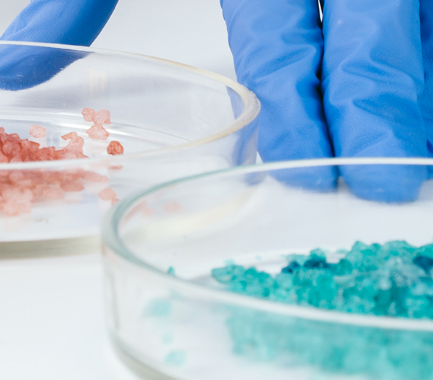Your contact
PENPET-Team - Hamburg

Christoph Meister
Sales
Tel. +49 (0) 40 - 675 7 99 30
sales@penpet.de
Get in touch with us.
Phosphoric acid
Phosphoric acid is an inorganic compound of great importance for the chemical industry and technical applications in many other areas. The substance can be produced on an industrial scale by burning phosphorus and then hydrolyzing and hydrating the resulting phosphorus pentoxide to form phosphoric acid. Alternatively, phosphate-containing minerals such as hydroxyapatite can be treated with sulfuric acid in aqueous solution to obtain phosphoric acid and corresponding sulfates. In addition, promising processes for the environmentally friendly extraction of phosphorus from sewage sludge are now being tested.
The compound is an important raw material for the production of phosphate-based fertilizers and detergents. Diluted phosphoric acid is used in beverages and food as a preservative, acidity regulator and acidulant. In products such as cakes, sausages and meat, it prevents gradual discoloration of the food and the rancidity of the fats contained. Dentistry uses phosphoric acid to make temporary dental cement from zinc phosphate and as an etching solution for cleaning and roughening tooth surfaces. The substance is also used as a rust converter and rust inhibitor, as a component of buffer solutions and for etching microelectronic components such as semiconductors and silicon nitride wafers. In fuel cells, the acid is contained as an electrolyte.
At PENPET you can order the required amount of phosphoric acid in an uncomplicated and sustainable way. We look forward to receiving your inquiry for an individual offer. It is delivered as a concentrated solution in ISO tank containers and IBCs.
CAS no. 7664-38-2
EINECS no. 231-633-2
Molecular formula: H3PO4
Synonyms: Orthophosphoric acid, ortho-phosphoric acid, phosphoric acid, E 338
Areas of application: Manufacture of fertilizers containing phosphate, detergents, dental cement and cosmetic products, use as an electrolyte, caustic solution, rust preventative and rust remover, use as an acidifier, acidity regulator and preservative
More information
Phosphoric acid is an oxyacid of phosphorus. Their molecules consist of a phosphorus atom in the center and the elements oxygen and hydrogen. The phosphorus maintains single bonds to three hydroxy groups and one double bond to an oxygen atom. Correspondingly, the solution of the acid in water proceeds in three steps of protolysis. The hydrogen protons of the hydroxy groups are then transferred to water molecules one after the other, forming first dihydrogen phosphate, then hydrogen phosphate and finally the phosphate anions of the substance.
By dehydration, phosphoric acid can form multimers such as diphosphoric acid or triphosphoric acid. Molecules adjacent to a hydroxy group bond via an acid anhydride bond with elimination of water and dissolution.
Under normal storage conditions, pure phosphoric acid is a deliquescent solid, which, however, increasingly assumes the state of a viscous liquid at temperatures slightly above 40 °C. The compound is colorless and odorless. In anhydrous form, the acid is highly hygroscopic. In most cases, however, it is present as an acidic, aqueous solution. Phosphoric acid is completely miscible with water and readily soluble in ethanol.
Phosphoric acid is non-flammable. Even if particles of the compound are swirled around, there is no risk of explosion. However, if the acid comes into contact with nitromethane, explosions are possible. It also reacts dangerously with metals, bases and sodium borohydride. When storing phosphoric acid, it should be noted that the compound has a corrosive effect on metals. The thermal decomposition of the substance can release toxic and corrosive fumes.
Phosphoric acid is non-toxic to the human organism, but in concentrated form it can cause severe chemical burns. Even in small quantities, it has an irritating to corrosive effect on the skin and respiratory tract. If the acid comes into contact with the eyes, there is a risk of serious and irreversible damage and loss of vision. Affected parts of the body should be rinsed immediately and thoroughly with water to dilute and remove acid residues. Immediate medical treatment is required.
Ingesting phosphoric acid causes burns and damage to the mucous membranes in the mouth, throat and gastrointestinal tract. Perforations of the esophagus and stomach are possible. Phosphoric acid consumed in higher amounts can contribute to the formation of kidney stones. After accidental ingestion, rinse mouth with water. Plenty of water should then be drunk to dilute the acid.
The substance has been assessed by the responsible authorities as slightly hazardous to water. Avoid escaping phosphoric acid into the environment or waste water. The compound is subject to transport regulations.
